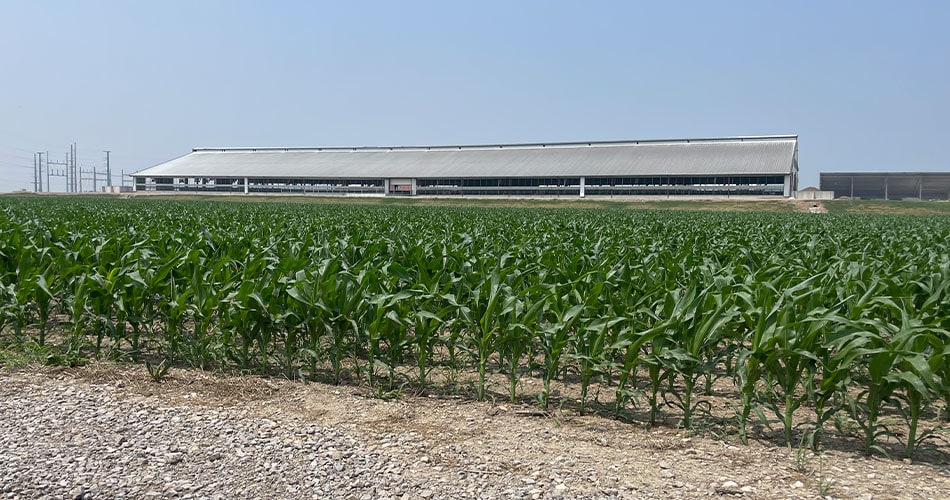Trent Stoller
Dairy farmer from Haviland, Ohio
Trent Stoller of GreenTop Acres is a first-generation dairy farmer who works closely with a dedicated team of employees to care for nearly 10,000 cows on five farms in northwest Ohio. Trent is using cutting-edge technology to help reduce his farm’s environmental footprint and produce wholesome milk that helps feed the world.
MORE FROM THE FARM
Hear Trent Stoller share his thoughts on sustainability.
Tell us about your farm and the teams that care for your cows.
We have about 10,000 cows spread across five dairies, and we have a very large team that is broken up into specialty care areas. We have a team that takes care of the milking, another team that takes care of the feeding and a team that takes care of the new calves. One of the benefits of our size is that we are able to get some of the best and brightest in each of those areas and allow them to specialize. We have people that are passionate about those areas and give them the resources to do what they’re good at.
As a large farm with multiple locations, it allows us the opportunity to take the best practices from each farm and implement them on our other farms. If we see this farm is doing a little bit better in cow care, or that farm is doing a little bit better in milk quality, we can implement those practices everywhere. That’s one of my jobs – to look at how we can continue to improve.
How and why do you incorporate byproducts from other industries into your cows’ diets?
One thing that often gets overlooked is that cows are part of a larger ecosystem – they consume so many feeds and byproducts that actually would be waste if they didn’t go into the cows’ diet.
The ration, or the feed, that the cows eat is formulated by a nutritionist. They take an analysis of all of the different types of feeds available and decide what is best for the cows. Corn silage is the basis of the ration, and then we add in a number of byproducts along with other ingredients. Some examples are soy hulls and soybean meal, which are byproducts of soy oil, and cotton seed, a byproduct of making cloth. Rather than getting thrown away or going to a landfill, we can blend them together to feed the cows, and they can digest it and generate milk. I like to think of it the same way we think of recycling – it helps close that entire loop where nothing gets thrown away.

We know dairy farmers are able to recycle water an average of 3-5 times on their farms. What does water usage look like on your farms?
We consider ourselves a very efficient user of water and try to capture and reuse our water as many times as we can.
The water first comes from the well and helps cool our milk, water our cows and feed the sprinkler systems that helps cool them, and then after all of that we recapture that water and send it out to irrigate our crops. So often that water has been used three, four or five times before we apply it to the crops.
What’s the future of the dairy industry look like to you?
Similar to many other industries, I think the dairy industry will continue to progress, and there will be new technologies. Exactly what those are, I can’t say, but I would expect that just as the dairy community today is so much more sustainable and environmentally friendly than it was 20 or 50 years ago, I would expect those same improvements 10 and 20 years from now. And for us, that’s exciting to be a part of.

Learn more about how Trent Stoller is using new technology to protect and improve the environment or meet more Ohio and West Virginia dairy farmers.

